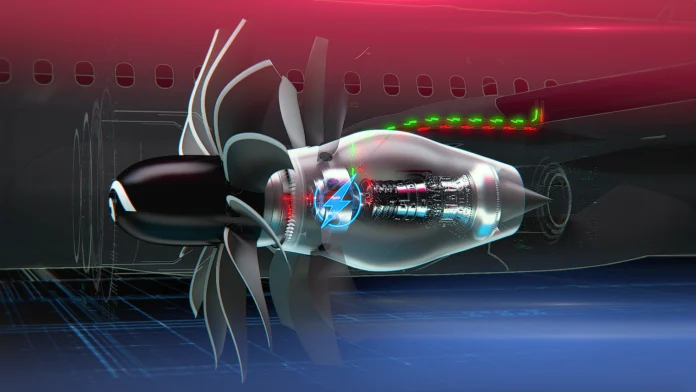NASA, in partnership with GE Aerospace, is designing a new jet engine concept aimed at the next generation of ultra-efficient airliners
The initiative, part of NASA’s goal to enhance the sustainability of the aviation industry, focuses on developing a small core for a hybrid-electric turbofan jet engine, which promises to reduce fuel burn by 10% compared to contemporary engines.
Sustainability within the aviation industry
A jet engine’s core is crucial as it is where compressed air is mixed with fuel and ignited to generate power. By making this core smaller, NASA aims to improve fuel efficiency and cut down on carbon emissions.
This project, Hybrid Thermally Efficient Core (HyTEC), aims to demonstrate the potential of this compact core technology and make it ready for integration into next-generation aircraft by the 2030s.
NASA’s Sustainable Flight National Partnership
HyTEC plays a significant role in NASA’s Sustainable Flight National Partnership.
HyTEC is divided into two phases. The first phase was dedicated to selecting the component technologies for the core demonstrator. Researchers focused on exploring innovative materials capable of withstanding higher temperatures and pressures, which are necessary for a smaller core that maintains the same level of thrust as current jet engines.
The second phase, which is just beginning, involves the design, construction, and testing of this compact core. This phase is a complex endeavour that combines various advanced technologies to create a new type of engine. The ultimate goal is to prove the capabilities of HyTEC’s compact core through ground testing.
A critical aspect of the project is the development of new materials that can endure the increased heat and pressure resulting from the reduced core size. This materials research, along with advancements in aerodynamics, is essential to achieving the desired improvements in fuel efficiency and emissions reduction.
Higher bypass ratio to emit fewer carbon emissions
The HyTEC program also aims to enable a higher bypass ratio. This term describes the relationship between the air flowing through the engine core and the air bypassing the core.
By reducing the core size and increasing the size of the turbofan, while maintaining the same thrust output, the HyTEC engine concept will use less fuel and emit fewer carbon emissions.
Another innovative feature of HyTEC is its hybrid-electric capability. The engine core will be increased by electrical power, further reducing fuel consumption and carbon emissions. This hybrid-electric design positions HyTEC as potentially the first production engine for airliners with hybrid-electric capabilities.
The collaboration between NASA and GE Aerospace builds on a long history of advancing aviation technologies.
As Phase 2 progresses, the aviation industry looks forward to the potential of this technology to shape the future of more environmentally friendly air travel.











